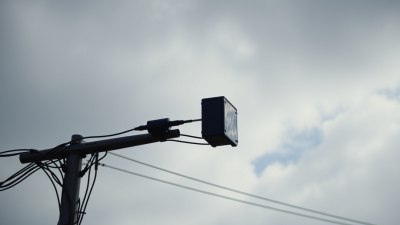Why Cabin Fever Is Basically a Human Weather Alert
Explore how cabin fever acts as a natural human response to environmental conditions and signals the need for change.

Cabin fever is an experience familiar to many, especially during harsh weather conditions that force us indoors for extended periods. The sense of restlessness, irritability, and fatigue that accompany cabin fever are not just random emotional states but are deeply rooted in our psychology and biology. This feeling essentially acts as a human weather alert, warning us of the need to adapt, seek change, or find new sources of stimulation.
Understanding cabin fever requires examining its origins, causes, and effects on human behavior. Its occurrence is often correlated with prolonged isolation, lack of natural light, and reduced physical activity—conditions frequently associated with extreme weather such as winter storms, heavy rainfall, or even pandemics that confine people inside. Recognizing cabin fever as a natural alert system helps individuals and communities respond appropriately by adjusting their environment or routines to maintain psychological balance.
Origins of the Term and Historical Context
The term "cabin fever" initially referred to the restlessness experienced by people confined within small cabins, like trappers, sailors, or pioneers during long winters or sea voyages. These people often endured conditions of confinement forced by external weather elements that limited their ability to go outside. Although the phrase dates back centuries, the concept of cabin fever has evolved to encompass modern contexts where people may remain indoors due to urban living, health emergencies, or extreme weather.
Historically, the awareness of cabin fever paralleled humanity's struggle with seasonal changes and natural barriers posed by weather. Communities developed rituals, social gatherings, or physical activities to mitigate the psychological impact of these constraints, highlighting an intrinsic understanding of human responses to environmental conditions. This relationship between confinement due to weather and human mental states underpins the idea of cabin fever serving as a weather-related alert system.
Psychological and Biological Mechanisms
At its core, cabin fever is a psychological response to sensory deprivation and social isolation. Humans are inherently social and active creatures, and extended periods without change or interaction disrupt normal psychological homeostasis. Studies in environmental psychology show that monotony and lack of novel stimuli can impair cognitive functions and increase negative emotions such as anxiety, irritability, and lethargy.
Biologically, limited exposure to natural light plays a significant role in cabin fever. Sunlight regulates the body’s circadian rhythms by influencing melatonin production, which controls sleep-wake cycles and mood. Reduced sunlight during extended indoor stays disrupts these cycles, often leading to symptoms similar to those of seasonal affective disorder (SAD). Furthermore, physical inactivity and limited environmental stimuli reduce endorphin levels, the body’s natural mood enhancers, compounding feelings of restlessness and distress.
Weather as a Driver of Confinement
Environmental factors, primarily weather, dictate much of human behavior and living patterns. Extreme winter weather can impose physical constraints, making travel dangerous and outdoor activities impractical. Similarly, heatwaves, hurricanes, or heavy rainfall may also limit outdoor exposure. These conditions can trigger cabin fever by confining people within indoor spaces, depriving them of needed sunlight and social interaction.
This restriction acts as a natural feedback mechanism. The unpleasant psychological symptoms of cabin fever push individuals to seek changes such as opening windows, rearranging living spaces, socializing virtually, or increasing physical activity indoors. This feedback highlights how cabin fever serves as an internal weather alert prompting humans to respond adaptively to environmental limitations.
Impact on Mental Health and Behavior
Prolonged episodes of cabin fever can significantly affect mental health, exacerbating feelings of depression, anxiety, and irritability. The sensation of being trapped or confined intensifies stress, influencing hormonal responses and even physical health. Behavioral changes such as restlessness, increased conflict with family members, and trouble concentrating are common manifestations.
Moreover, cabin fever can impair decision-making and motivation, reducing productivity and social engagement. Recognizing these symptoms early is crucial for managing their impact. Many mental health experts suggest specific strategies like maintaining routines, engaging in regular physical activity, and maximizing exposure to natural light as ways to counteract cabin fever and its related effects.
Cabin Fever in Modern Times
While originally associated with isolated pioneers or sailors, cabin fever is now ubiquitous in urban and suburban populations. Modern architecture and technology contribute both as solutions and complicators. For instance, central heating and climate control shield inhabitants from external weather, but the resulting lack of connection to natural environmental cues can exacerbate feelings of isolation.
The COVID-19 pandemic particularly highlighted the impact of confinement on mental health, with large portions of people worldwide experiencing cabin fever-like symptoms during lockdowns. This global event reinforced the understanding that human psychological well-being is deeply intertwined with environmental conditions and social interaction.
Strategies to Mitigate Cabin Fever
Given its effects, it is essential to adopt strategies that mitigate cabin fever during unavoidable confinement. These include maximizing natural light indoors by opening curtains or spending time near windows, engaging in physical exercise to boost endorphin levels, and maintaining social connections through technology.
Additionally, varying routines and introducing new activities can provide mental stimulation, countering monotony. Activities like reading, pursuing hobbies, or learning new skills stimulate cognitive function. Bringing elements of the outdoors inside, such as plants or natural sounds, also helps restore a sense of connection with nature.
Cabin Fever as an Evolutionary Advantage
Interpreting cabin fever as a human weather alert also sheds light on its potential evolutionary advantages. The psychological discomfort caused by extended confinement motivates individuals to seek new environments or social interactions, critical behaviors for survival and reproduction. In harsh climates, these urges may prompt people to prepare for seasonal transitions or ensure better shelter and resources.
Hence, cabin fever operates as an internal signaling system developed to encourage adaptability and resilience. Instead of being merely a negative experience, it reflects a sophisticated biological and psychological toolkit that helps humans navigate environmental challenges.
The Role of Urban Design and Public Policy
Given the significant impact of cabin fever on mental well-being, urban design and public policy play important roles in mitigating its effects. Designing living spaces with ample access to natural light, ventilation, and connection to outdoor environments helps reduce confinement-related distress. Parks, green spaces, and accessible outdoor areas in cities also provide necessary refuges during adverse weather.
Policies that promote flexible work arrangements and encourage safe social interactions during challenging weather can further alleviate the psychological burden of being indoors. Recognizing cabin fever as part of human weather awareness systems may influence future urban planning to support mental health in changing climates.
Understanding and Accepting Cabin Fever
Accepting cabin fever as a natural human response to weather-induced confinement helps destigmatize the experience. It encourages individuals to listen to their psychological signals and take proactive steps toward coping. Awareness promotes empathy, bridging understanding between those struggling with feelings of restlessness and those who may not yet experience it.
Ultimately, cabin fever emphasizes the importance of the relationship between humans and their environment. Just as meteorological alerts warn of external dangers, cabin fever alerts us internally to the need for environmental or behavioral changes. It provides a unique window into the human experience that connects our biology, psychology, and environment.
This understanding can guide us toward creating living environments and social frameworks that support well-being despite environmental challenges, turning cabin fever from a hardship into an adaptive guide for healthier living.











